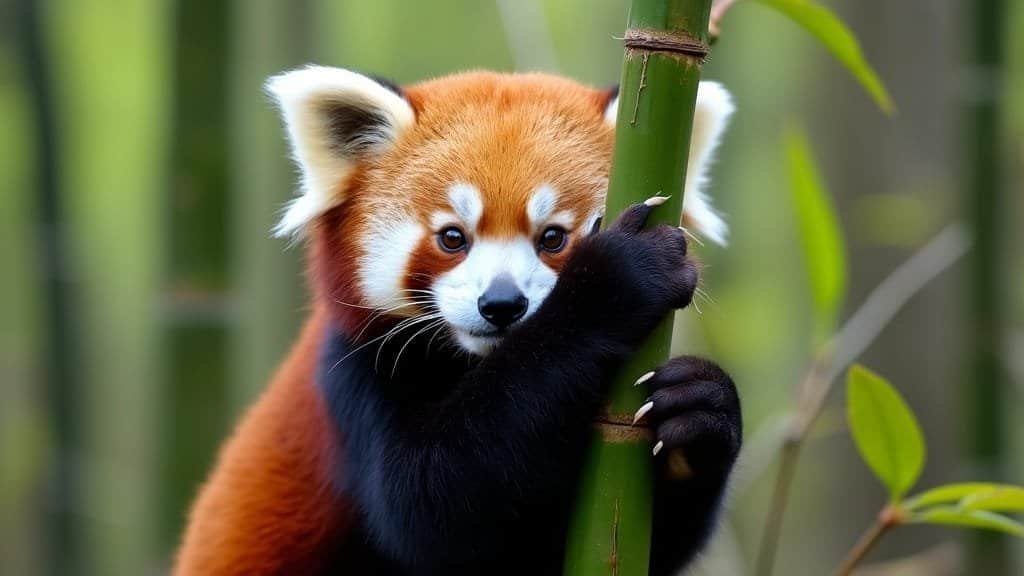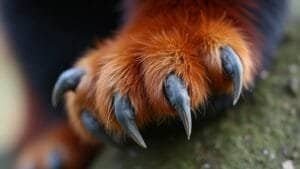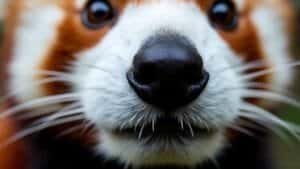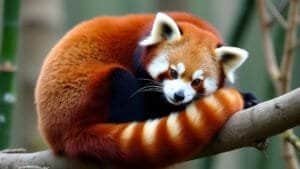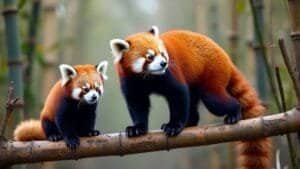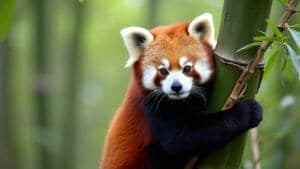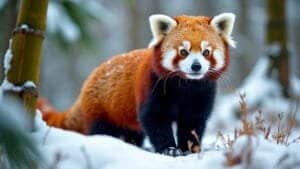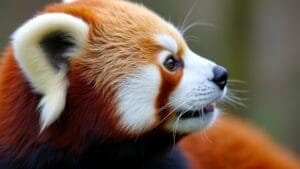The red panda’s “thumb” is a fascinating evolutionary adaptation that plays a vital role in its survival. Unlike a true thumb, this structure is a modified sesamoid bone that extends from the red panda’s front paw, functioning like an opposable digit. This pseudo-thumb allows red pandas to grasp bamboo stalks with precision, enabling them to consume their primary food source efficiently
It also supports their arboreal lifestyle by enhancing their ability to grip tree branches and maintain stability while climbing. In this article, we’ll delve into the anatomy of the red panda’s thumb, its various functions, and how it compares to similar adaptations in other animals, including the giant panda
Anatomy and Structure of the Red Panda’s Thumb
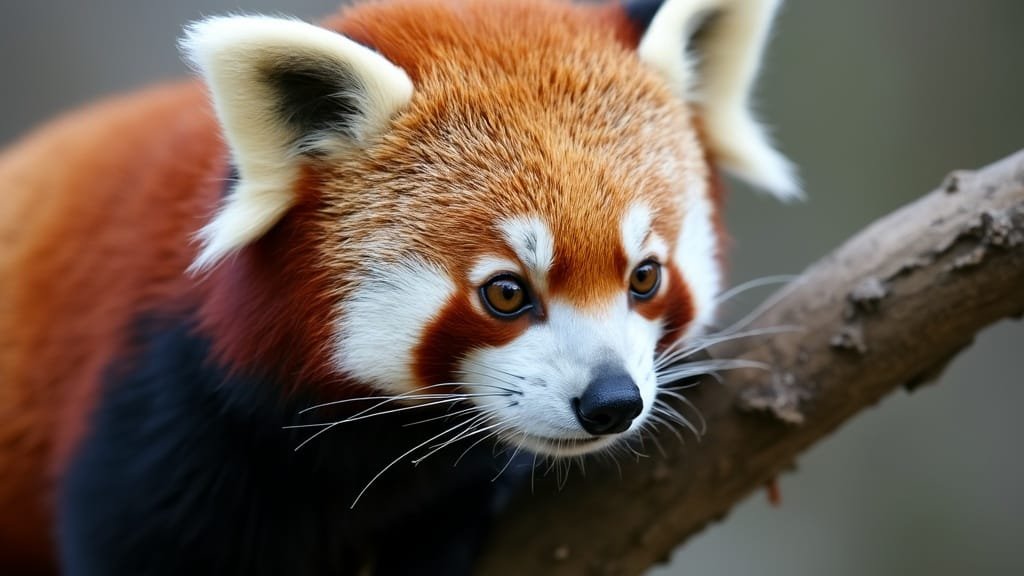
The red panda’s thumb is a unique adaptation that stands out among other mammals. Although it is not a true opposable thumb like those seen in primates, its design plays a vital role in the red panda’s ability to manipulate bamboo and navigate its arboreal habitat. Understanding the anatomy and structure of this pseudo-thumb reveals the evolutionary ingenuity that allows red pandas to thrive in their environment
What Is the Red Panda’s Pseudo-Thumb?
The red panda’s thumb is not a true digit but rather a modified sesamoid bone located in its front paw. Sesamoid bones are typically embedded in tendons or muscles and are not traditionally associated with gripping functions. However, in red pandas, this bone has evolved into an extended structure that functions like a thumb, enabling them to grasp and manipulate objects
This pseudo-thumb plays a crucial role in the red panda’s daily life, particularly in feeding. By acting as a stabilizing digit, it helps the red panda hold bamboo stalks firmly while stripping leaves or chewing the stalks. Its location near the base of the paw allows it to work seamlessly with the other fingers, creating a pincer-like grip that compensates for the lack of a true opposable thumb
How Is the Thumb Formed and Positioned?
The pseudo-thumb is formed through the elongation of the radial sesamoid bone, a process that has been shaped by millions of years of evolution. Positioned on the medial side of the red panda’s paw (closer to the body), this bone extends outward to resemble an additional digit. Its unique placement allows it to press against the other fingers, enabling the red panda to grasp bamboo stalks and other objects with precision
This adaptation is particularly evident during feeding, where the red panda holds bamboo stalks upright, using its pseudo-thumb and remaining digits to maintain a secure grip. The thumb’s position also plays a key role in climbing, as it helps the red panda grip tree bark and branches for stability. Endo et al. (Journal of Anatomy, 1999) found that the positioning and structure of the pseudo-thumb are directly linked to the red panda’s arboreal lifestyle and reliance on bamboo as its primary food source
Differences Between the Pseudo-Thumb and a True Thumb
While the red panda’s pseudo-thumb provides functionality similar to that of a true thumb, its structure and capabilities differ significantly. A true opposable thumb, like that seen in primates, has a wide range of motion and is capable of rotating to touch the tips of other fingers. This ability allows for precise manipulation of objects, a feature that the pseudo-thumb lacks
The red panda’s pseudo-thumb is fixed in position, offering stability rather than full mobility. Despite this limitation, it performs its role effectively by enabling the red panda to securely hold bamboo and navigate its arboreal environment. This fixed structure reflects a balance between functionality and evolutionary efficiency, as red pandas do not require the full mobility of a true thumb to handle their diet or climb trees
The pseudo-thumb’s development is an example of convergent evolution, where unrelated species evolve similar traits to adapt to similar ecological challenges. Both red pandas and giant pandas have pseudo-thumbs derived from the radial sesamoid bone, but their designs reflect their specific needs. The giant panda’s thumb is larger and stronger, adapted for holding thick bamboo stalks, while the red panda’s is smaller and more flexible, suited for gripping thinner bamboo shoots and aiding in arboreal movement
For further reading on the structure and evolution of the red panda’s thumb, refer to the Nature article on panda thumb evolution
Functions of the Red Panda’s Thumb
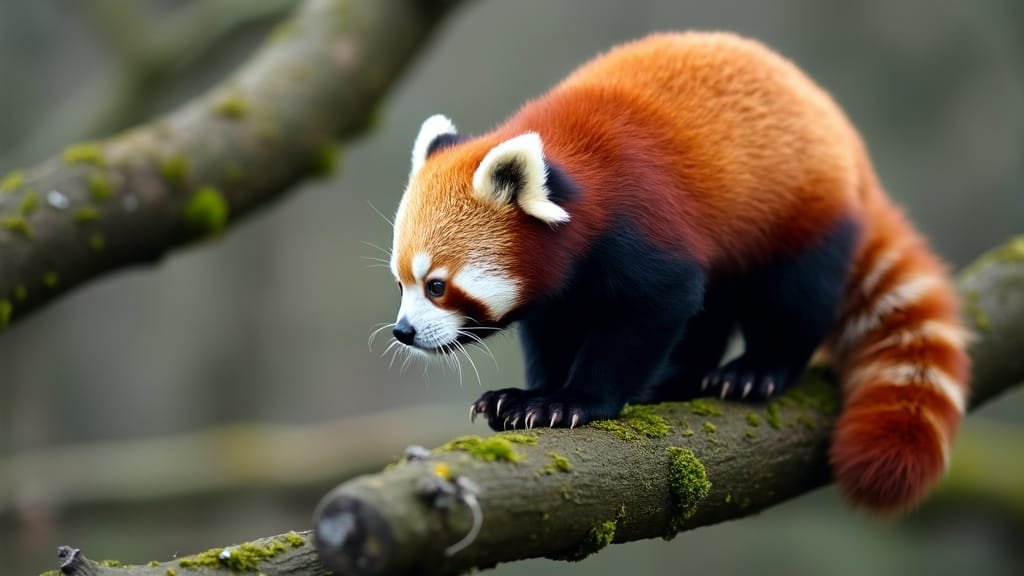
The red panda’s pseudo-thumb is more than a structural curiosity—it is a critical adaptation that enhances its ability to survive in the wild. Its role extends beyond feeding, contributing to climbing, stability, and even behavioral functions. These various applications highlight how the pseudo-thumb has been optimized for the red panda’s bamboo-dependent and arboreal lifestyle
How the Thumb Aids in Gripping Bamboo
The primary function of the red panda’s pseudo-thumb is to facilitate the handling of bamboo, which makes up more than 90% of its diet. The pseudo-thumb allows red pandas to grasp bamboo stalks with precision, creating a secure hold that prevents the stalk from slipping as they strip leaves and chew
This gripping ability is vital because bamboo, although abundant, is a low-nutrient food that requires efficient processing to meet the red panda’s energy needs. The pseudo-thumb’s design ensures that red pandas can eat continuously without expending excessive energy on handling their food. Observations by Wei et al. (Journal of Mammalogy, 2014) have shown that the pseudo-thumb’s functionality significantly increases feeding efficiency, allowing red pandas to consume enough bamboo to sustain their daily activities
Role of the Thumb in Climbing and Stability
In addition to aiding in feeding, the pseudo-thumb plays a critical role in climbing, a necessary skill for red pandas to navigate their arboreal habitat. The pseudo-thumb enhances the red panda’s grip on tree bark and branches, providing the stability needed for safe movement through the forest canopy
This grip strength is particularly important when red pandas climb vertically or traverse narrow branches. Combined with their flexible ankles, which can rotate outward, the pseudo-thumb ensures that red pandas can maintain control and balance during their movements. Yonzon et al. (Biological Conservation, 1987) noted that this climbing ability is a key survival strategy for red pandas, helping them evade predators and access food sources in the tree canopy
Importance of the Thumb in Feeding Behavior
The pseudo-thumb also supports the red panda’s feeding behavior by allowing it to hold food in one paw while eating. This dexterity is a rare trait among mammals and enables red pandas to process bamboo efficiently, even when perched on a tree branch or navigating uneven terrain
Unlike other animals that rely solely on their mouths to manipulate food, red pandas can use their pseudo-thumb in conjunction with their claws and other digits to achieve precise handling. This behavior has been observed during feeding sessions, where red pandas consistently use their pseudo-thumbs to hold and stabilize bamboo stalks while stripping leaves
For further insights into how red pandas use their pseudo-thumb for survival, visit the WWF UK red panda resource
Evolutionary Adaptations and Comparisons
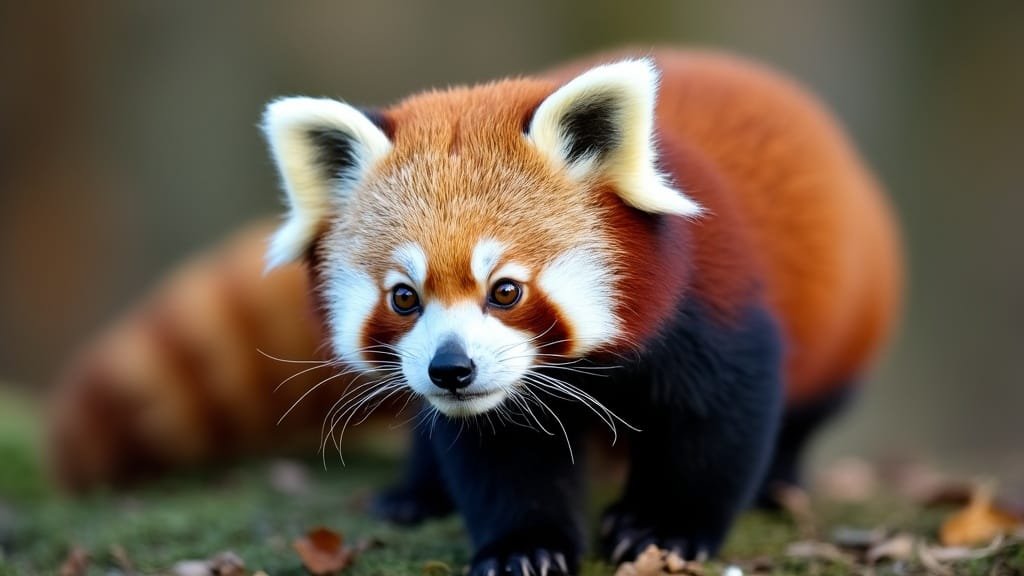
The red panda’s pseudo-thumb is a remarkable evolutionary feature that showcases how adaptations emerge to meet specific ecological needs. This unique structure, formed from a modified sesamoid bone, is essential for the red panda’s survival. It reflects the interplay between dietary specialization and environmental challenges, while also drawing interesting parallels to similar features in other species
Evolutionary Advantages of the Red Panda’s Thumb
The evolution of the red panda’s pseudo-thumb is deeply tied to its reliance on bamboo as a primary food source. Bamboo, while abundant in the red panda’s habitat, is a low-calorie food that requires significant consumption to meet energy needs. To efficiently process bamboo, the red panda’s pseudo-thumb developed as a means of gripping and handling the stalks. This anatomical adaptation allows red pandas to hold bamboo securely while stripping leaves and chewing stalks, making feeding far more efficient than if they relied solely on their claws or paws
In addition to its role in feeding, the pseudo-thumb plays a crucial part in the red panda’s arboreal lifestyle. Red pandas spend much of their time climbing trees, whether to forage for bamboo, avoid predators, or rest. The pseudo-thumb enhances their grip on tree bark and branches, enabling them to navigate the forest canopy with greater stability and control
This dual-purpose functionality—feeding and climbing—makes the pseudo-thumb an indispensable evolutionary trait. Research by Endo et al. (Journal of Anatomy, 1999) suggests that this adaptation not only supports the red panda’s dietary needs but also contributes significantly to its survival in a challenging environment
Comparison to the Giant Panda’s Pseudo-Thumb
Both red pandas and giant pandas have pseudo-thumbs derived from their sesamoid bones, but their structures and functions reveal key differences shaped by their distinct evolutionary paths. In giant pandas, the pseudo-thumb is larger and more robust, reflecting their need to handle thick bamboo stalks. By contrast, the red panda’s pseudo-thumb is smaller and more flexible, suited to gripping the thinner bamboo shoots that make up its diet
Functionally, the red panda’s pseudo-thumb serves dual purposes, aiding in both feeding and climbing. The giant panda’s pseudo-thumb, however, is almost exclusively used for feeding, as giant pandas do not share the red panda’s arboreal habits. Despite these differences, both species have evolved their pseudo-thumbs independently, a phenomenon known as convergent evolution
This process occurs when unrelated species develop similar traits to address comparable ecological challenges. Roberts and Gittleman (Mammalian Biology, 2020) emphasize that the pseudo-thumb is a prime example of how different species can evolve similar solutions to adapt to their environments
Other Animals With Similar Thumb-Like Features
The red panda is not the only species to develop a pseudo-thumb. Similar adaptations are seen in other animals, including the giant panda and even some species of moles. Giant pandas share the red panda’s reliance on bamboo and have a pseudo-thumb that evolved independently for a similar purpose: holding and manipulating bamboo stalks. However, their pseudo-thumb is more robust and designed for handling larger quantities of bamboo
Moles, on the other hand, use their modified sesamoid bones for digging rather than feeding. Their pseudo-thumbs improve their ability to burrow through soil, illustrating how the sesamoid bone can evolve for entirely different functions in other species. Koalas also demonstrate an interesting example of thumb-like adaptations. Although they have true opposable thumbs, their additional digits enhance their grip on eucalyptus branches, showing another variation of how similar traits can evolve in response to specific ecological demands
These examples underscore the versatility of the sesamoid bone as a foundation for evolutionary innovation. In the red panda, this structure has been uniquely tailored to meet the demands of its bamboo-centric diet and arboreal lifestyle, making the pseudo-thumb a vital component of its survival strategy. For further reading on convergent evolution and the role of the pseudo-thumb in pandas, refer to the Scientific American article on panda thumb evolution
